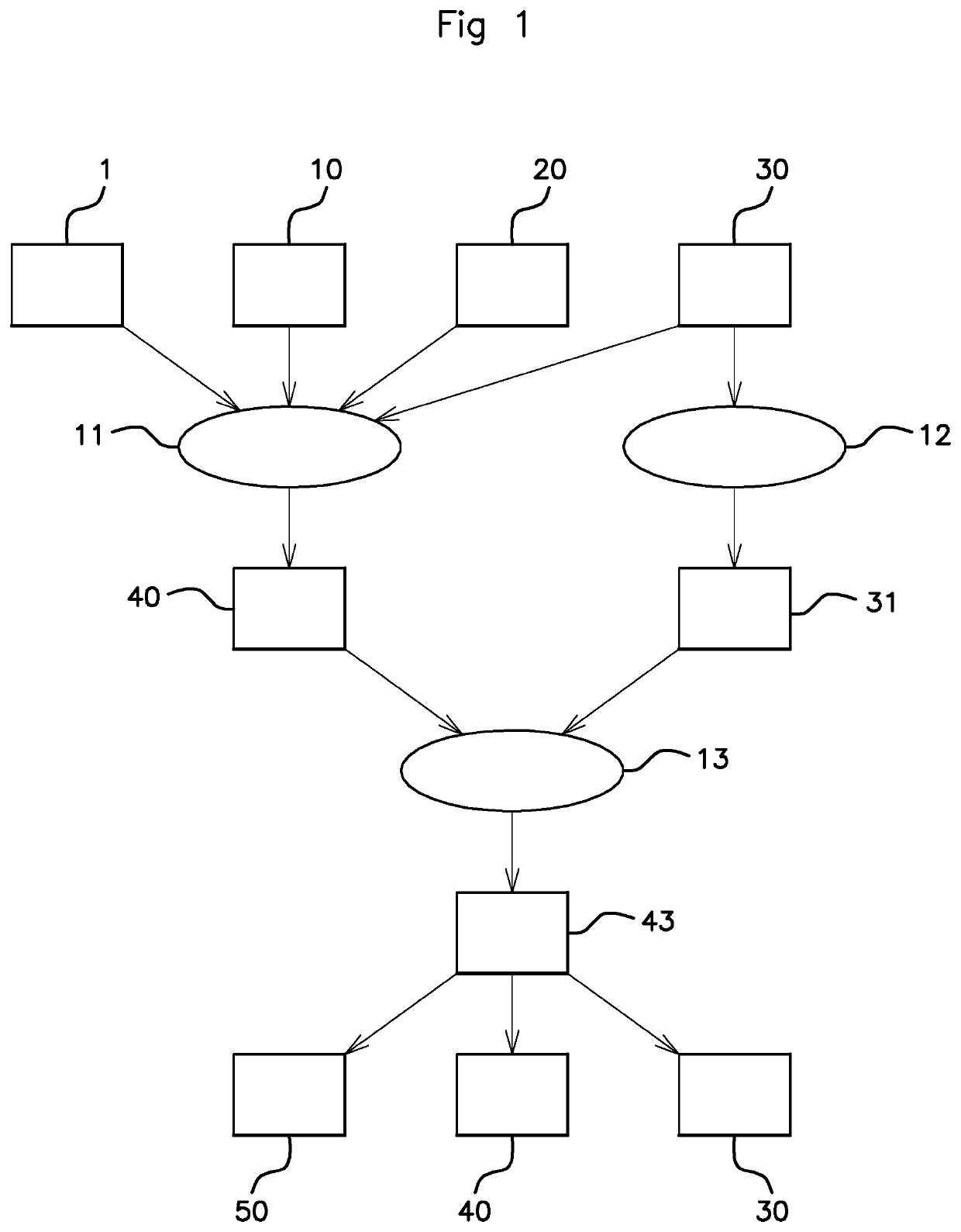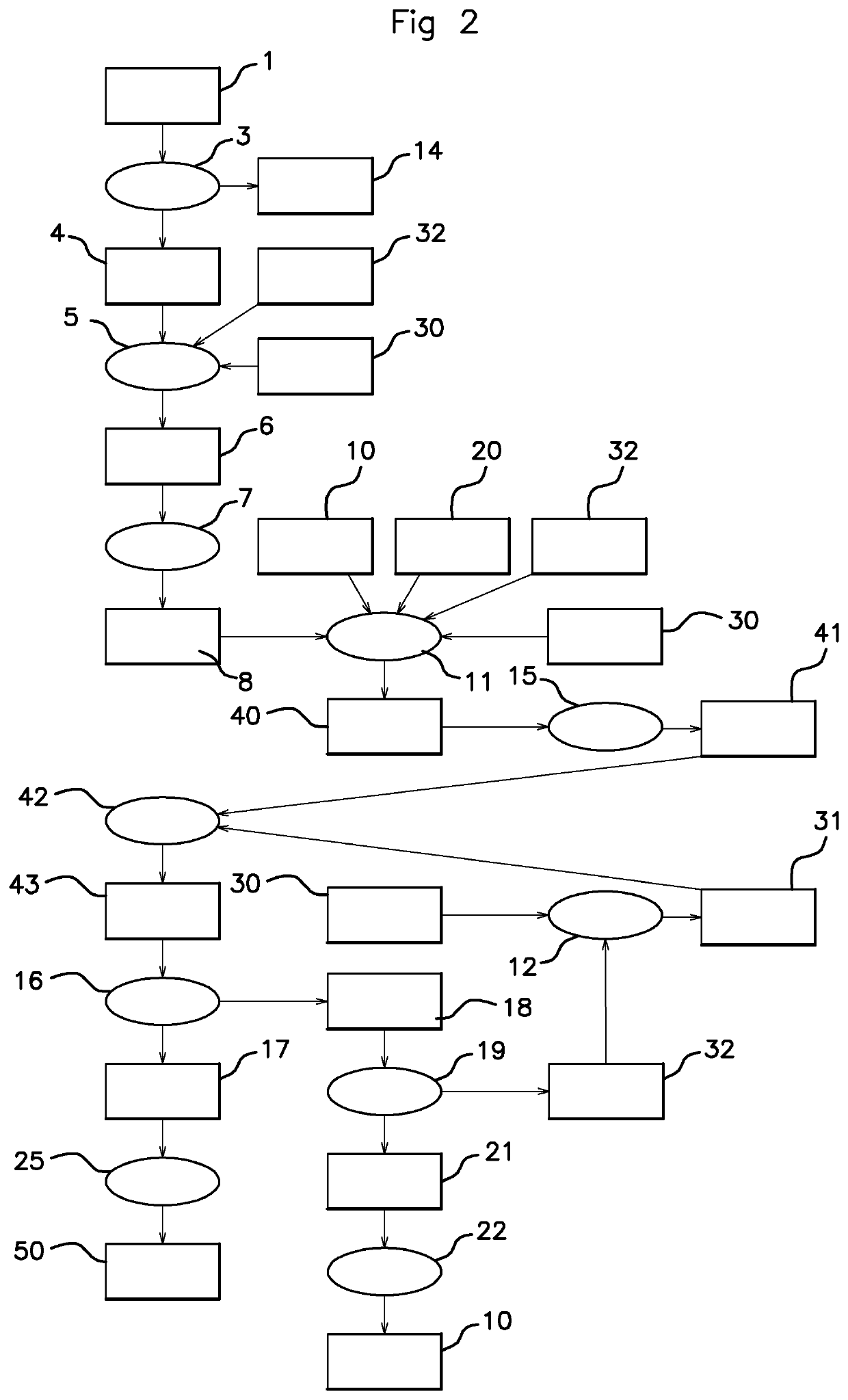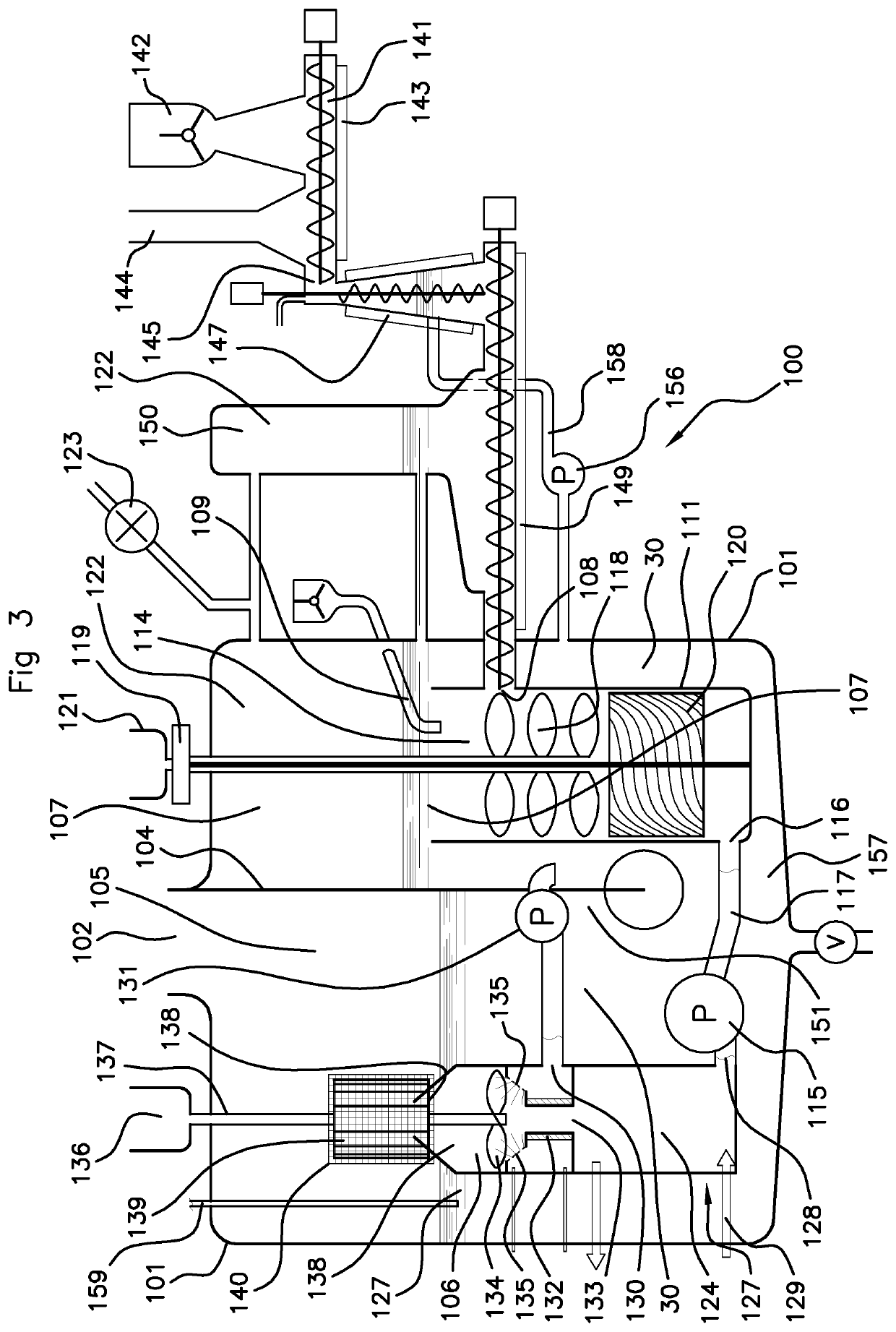Process and device for producing energy products by catalytic cracking of a hydrocarbon-based solid material without coke formation
- Summary
- Abstract
- Description
- Claims
- Application Information
AI Technical Summary
Benefits of technology
Problems solved by technology
Method used
Image
Examples
example 1
of Household Refuse
[0248]Household refuse obtained from an urban collection typically comprises on average about 32% (by mass) of putrefiable matter (i.e. of biomass of animal or plant origin), about 45% (by mass) of combustible matter (including 34% of essentially cellulose-based matter and 11% of synthetic polymeric or composite materials) and about 23% (by mass) of inert matter (glasses, metals, minerals). After removal of the inert matter from this household refuse, this refuse is subjected to a step of compression in a press as described in EP 0 563 173. During this compression, the household refuse separates into a fraction flowing through the dies of the press in the form of an organic pulp containing a mass proportion of 96% to 97% of putrefiable matter and a fraction, named solid household waste material, retained in the press and containing about 70% of cellulose-based matter (notably papers, cardboards and sanitary textiles) and about 30% of synthetic polymeric waste mate...
PUM
 Login to View More
Login to View More Abstract
Description
Claims
Application Information
 Login to View More
Login to View More - R&D
- Intellectual Property
- Life Sciences
- Materials
- Tech Scout
- Unparalleled Data Quality
- Higher Quality Content
- 60% Fewer Hallucinations
Browse by: Latest US Patents, China's latest patents, Technical Efficacy Thesaurus, Application Domain, Technology Topic, Popular Technical Reports.
© 2025 PatSnap. All rights reserved.Legal|Privacy policy|Modern Slavery Act Transparency Statement|Sitemap|About US| Contact US: help@patsnap.com



